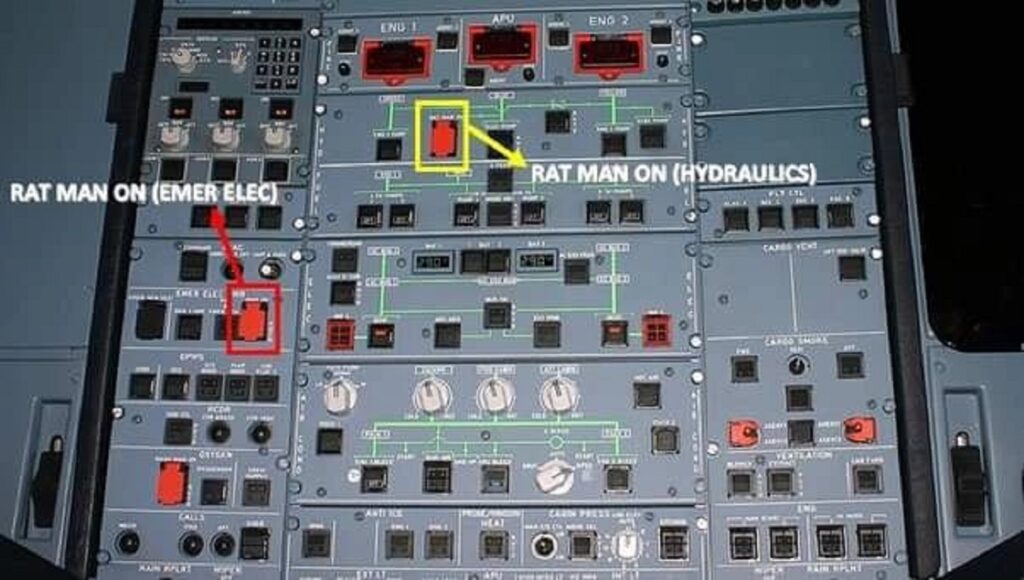
The aircraft has two switches for manually extending the RAT, one on the hydraulics control panel and the other on the emergency electrical configuration panel, both found on the main overhead panel. The RAT is designed to automatically deploy when it detects a loss of two AC generators, resulting in the loss of AC BUS 1 and AC BUS 2. Once deployed, it operates a hydraulic motor through the blue hydraulic system, which in turn powers the aircraft’s emergency electrical generator. This generator supplies power to the essential AC and DC buses via a transformer rectifier.

In most cases, the RAT extends automatically in response to an electrical system failure, so pilot intervention is usually unnecessary. However, if the RAT fails to extend, the pilot can use the switches to deploy it.

It’s important to note that the consequences of using the RAT switches can vary depending on the aircraft’s condition. For instance, if a pilot were to unknowingly extend the RAT from the emergency electrical panel while the electrical system is functioning correctly (with AC BUS 1 and AC BUS 2 powered by the engine generators), it would lead to complications. This is because the emergency generator would take precedence over the engine generators, causing the essential bus tie breakers to disconnect from the engine generators and rely on the emergency generator instead.
In some older A320 models, with the landing gear down, the RAT would eventually decouple from the electrical system, rerouting power back to the engine generators. In newer models, the RAT stalls at a lower speed, so it doesn’t decouple. RAT extension is irreversible and can only be reset on the ground.
Using the RAT switch on the hydraulic panel, when the aircraft is in good condition and AC BUS 1 and AC BUS 2 are still powered, has minimal consequences. It simply signals the RAT to extend, and as long as the buses remain powered, the blue hydraulic system continues to be supplied by its associated electrical pump. However, after landing, you might need to explain the extended RAT to maintenance personnel. It’s worth noting that the hydraulics panel switch is used if there’s a low-pressure situation in the blue hydraulic system, as the RAT, when deployed, can pressurize the blue system on its own.
Author – Nischal Paudel
Pilot





